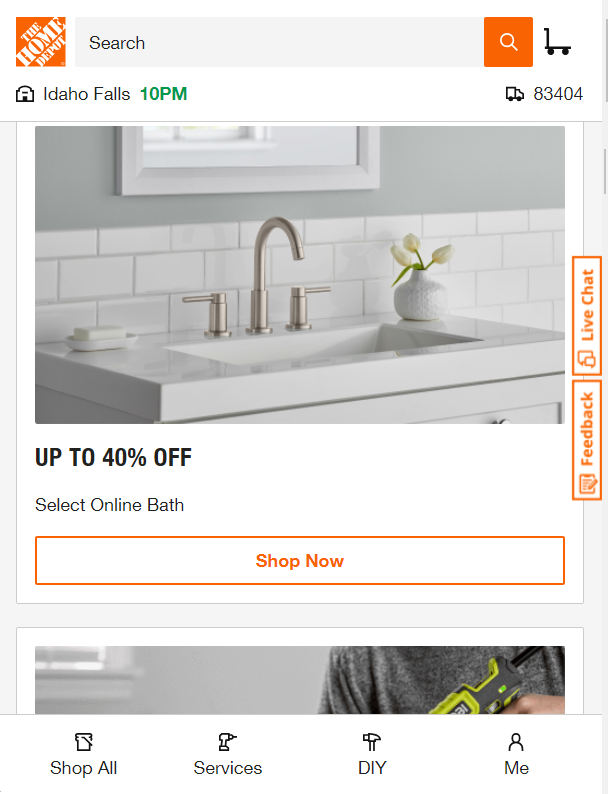Visual Hierarchy
https://www.nike.com/

Visual hierarchy in design, like that used by Nick.com, orders elements by visual importance using contrast, balance, emphasis, and scale. It guides the viewer's eye, ensuring key content stands out. Neglecting this can lead users to overlook vital elements, so understanding reading patterns, such as the F-shaped pattern common in the Western world, is essential to maintain user attention and guide them effectively.
White Space and Clean Design
The Home Depot

White space in design, as exemplified by The Home Depot, is the essential, often overlooked element that separates and defines components within a composition. It not only includes the area between elements but also the gaps within design elements and typefaces. Designers use white space to bring clarity, emphasis, and visual hierarchy to their work, facilitating a better user experience. In the past, design maximized available space, but modern design, like that of The Home Depot, incorporates more white space for improved clarity and impact. Achieving the right balance in white space can be challenging, but it's a crucial aspect of graphic design.
PARC: Alignment
Amazon.com

Amazon.com effectively applies the principle of alignment in its web design to create aesthetically pleasing and user-friendly page layouts. They use a grid-based layout for products, align navigation menus and filters, and maintain consistency in the alignment of product listings, call-to-action buttons, and user-generated content like reviews and ratings. This attention to alignment enhances the overall shopping experience and ensures that users can easily find, compare, and purchase products. It reflects a commitment to trust, balance, structure, and hierarchy in their web design, which is essential for a successful e-commerce platform.